People don’t sleep under Paula Kovarik’s quilts.
“No, not on the bed,” she says. “Some of them might be a little too disturbing.”
Kovarik loves traditional quilts, but she’s never made one with a flower on it. Her quilts aren’t the conventional patchwork quilt with stars and diamond patterns.
Round and Round It Goes, one of her quilts, is about “all the threats in the world,” she says. “Like earthquakes and oil usage and financial collapse and dictators and endangered species and overpopulation and forest fires.”
Her quilts, which hang on walls, deal with everything from cancer cells and radio waves to TV signals and computer circuits.
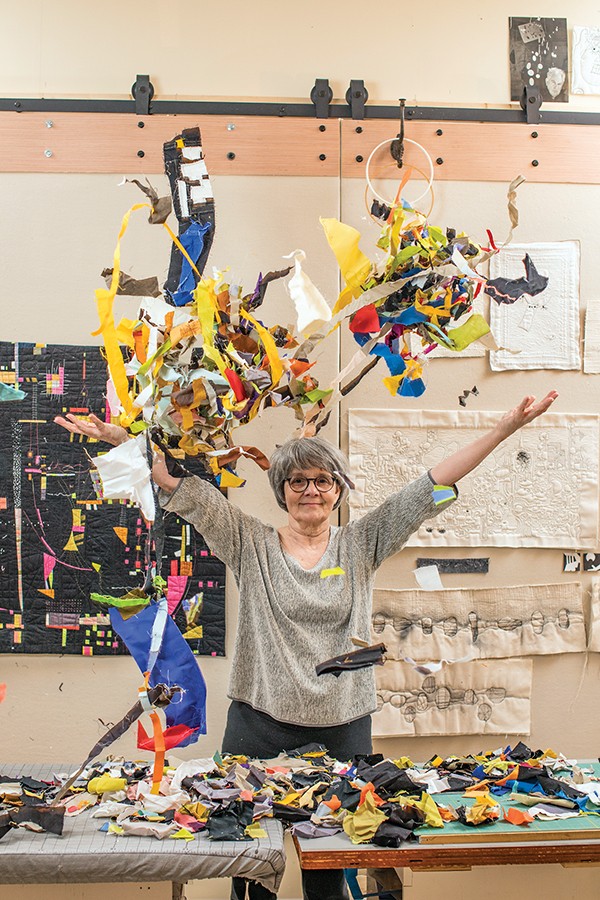
Paula Kovarik
Kovarik, 66, an internationally known quilt maker who lives in Memphis, will be included in “Stitched: Celebrating the Art of Quilting,” which opens May 10th at Crosstown Arts. The festival, which Kovarik organized, features quilts created by artists from around the world.
“Stitched” will include two exhibits: “Masterworks: Abstract and Geometric,” a traveling exhibition of art quilts, and “Blue: A Regional Quilt Challenge,” which Kovarik curated. “Stitched” will also include a series of workshops, gatherings, and presentations that celebrate the art of quilting.
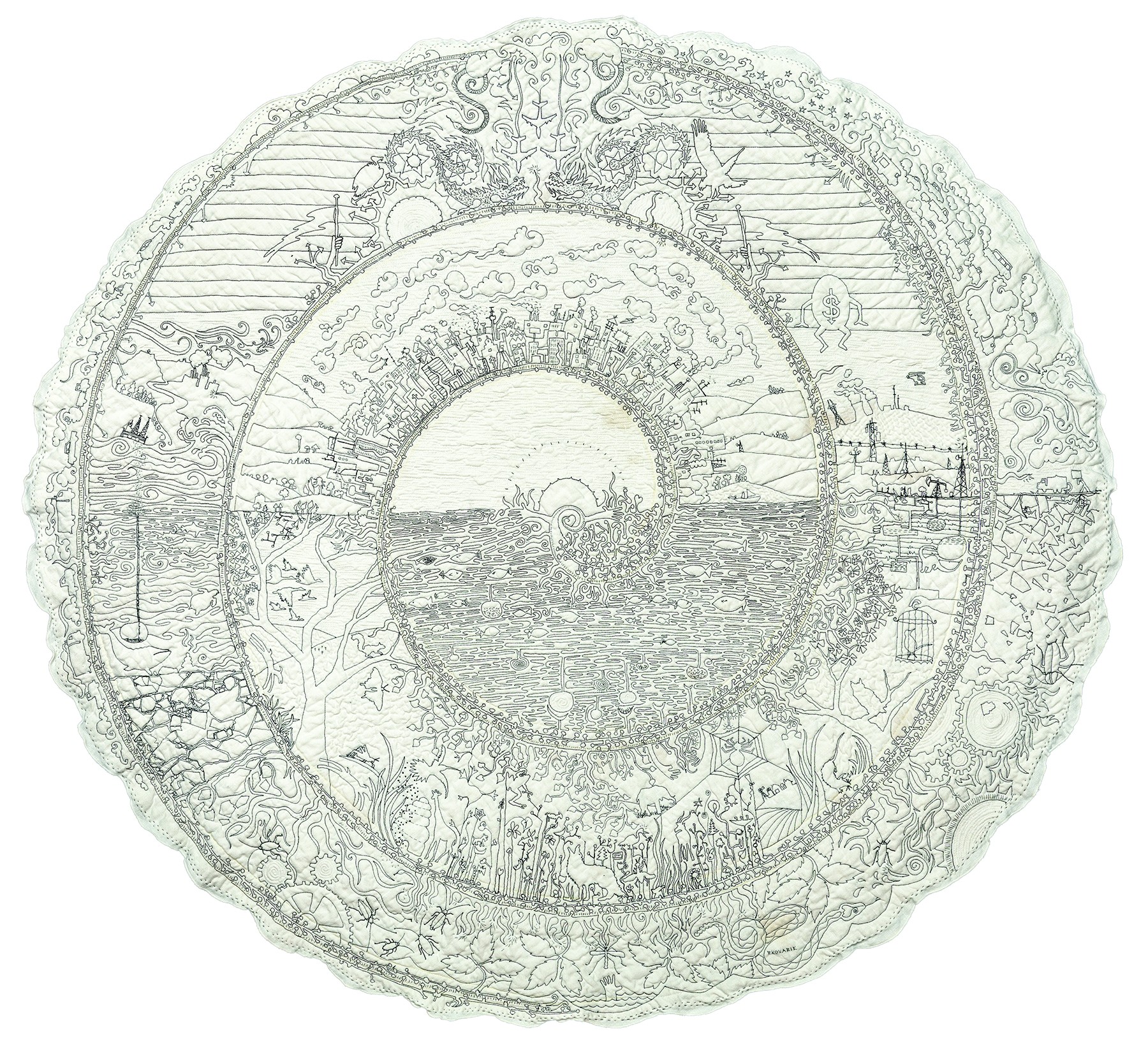 Paula Kovarik
Paula Kovarik
Round and Round It Goes
Martha Sielman, executive director of Studio Art Quilts Associates, curated the “Masterworks” exhibit, which includes Kovarik’s Round and Round It Goes quilt. “What fascinates me about Paula’s work is that it is extremely simple,” Sielman says. “It’s almost completely just a simple black line on a background, but it’s also incredibly complex. Because the imagery she uses is very complex. It’s a really powerful combination.”
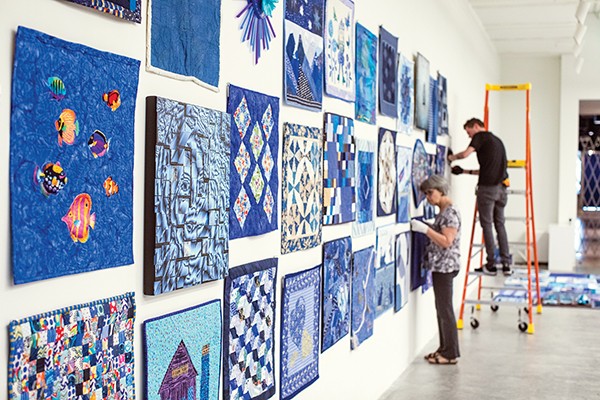
“Blue: A Regional Quilt Challenge,” curated by Paula Kovarik, is on display at Crosstown Arts.
Round and Round It Goes was quilted on a round tablecloth with scalloped edges. The viewer’s eyes follow a continuous stretch of black-and-white line drawing-looking images, which include buildings, clouds, and birds, that goes around and around in a dizzying fashion.
Dixon associate curator Julie Pierotti is another Kovarik fan. “I’ve been amazed by Paula Kovarik’s work since I first saw it a few years ago,” Pierotti says. “She takes a medium, quilting, that has such a comforting and sentimental connotation and completely turns it on its head. So there is the initial shock reaction, but when you examine each work closely and see the lines of thread moving through each work, you see how intricate they are and the thought and care Paula puts in.”
Kovarik, who was born in Michigan City, Indiana, says she always made things as a child.
One of her influences was a grade-school teacher who had the class interpret poems with drawings. “I remember thinking, ‘Oh, you can think about words in a different way,'” Kovarik says.
As a Girl Scout, Kovarik learned how to make a fire and build a tent, but she also “learned to use needles in many ways: knitting, crocheting, and sewing.”
Kovarik, who credits her mother as being her first sewing teacher, made her own clothes as a child. “I was a very small fifth grader or sixth grader, whatever. They didn’t have the style of clothes that everybody else was wearing in my size. I really don’t remember if they looked good or not.”
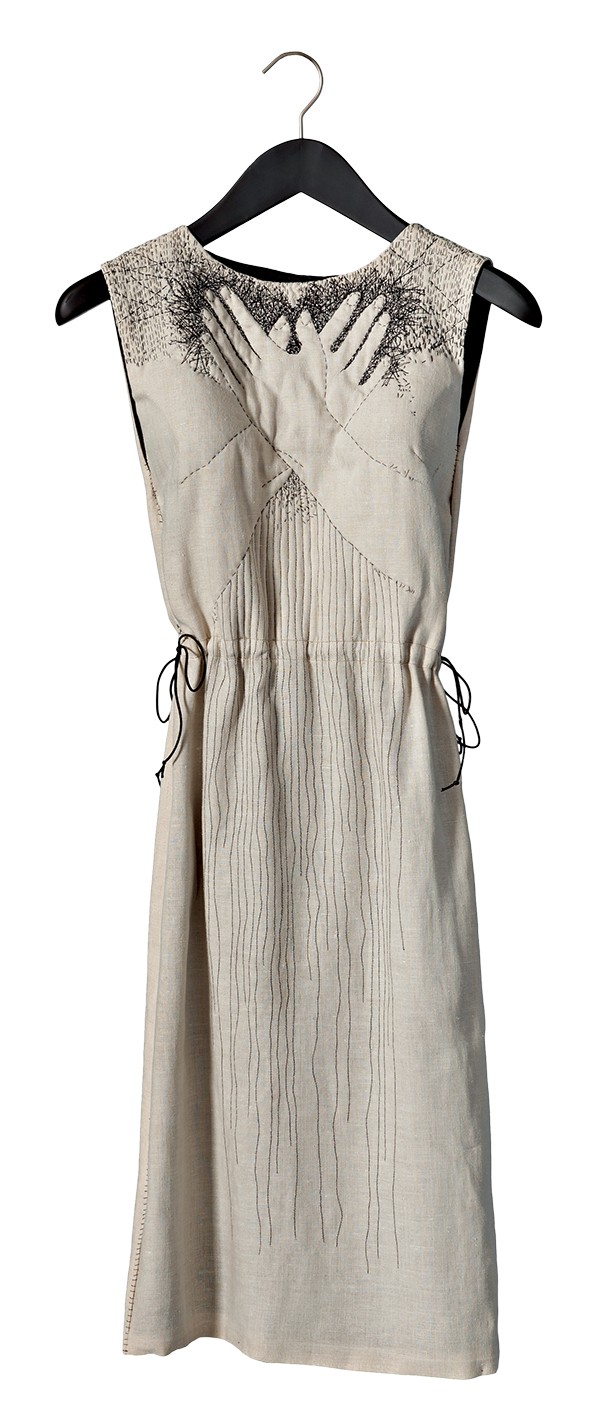 Paula Kovarik
Paula Kovarik
Heartfelt
It wasn’t the finished product that intrigued her. “I love any kind of tool. My father taught me how to use saws and hammers and lawnmowers. Mom was a total teacher in terms of cooking and sewing and all of the motherly arts. I really loved any kind of tool. I loved drafting tools. I loved construction tools.”
A tool is a way to create things, says Kovarik, who uses a sewing machine as the primary tool along with hand stitching to make her quilts. “It’s a way to use my hands to interpret what I’m thinking.”
Kovarik received her degree in graphic design from Southern Illinois University. “Part of our design training at SIU was full-throttled. There was a wood shop. There was a metal shop. There were typography lessons. Things like that. I think I was really enamored of the drill press. I liked to drill holes into things.”
Kovarik met her husband, Jim Kovarik, at a house party in Chicago. “Jim’s had many careers. He’s a writer. He has a master’s degree in technical writing. He’s also a farmer and a carpenter and a woodworker.”
They were back-to-the-landers up in Southern Illinois. “We had an organic farm. We built our own home,” she says.
Kovarik designed the house with the help of her husband. “We had a house raising with design students. It was passive solar. Jim has expertise with concrete, so we built it four feet into the ground for insulation. Oriented it to the sun so it would heat itself.”
They moved to Memphis in the early ’80s after “a family event,” Kovarik says. Their son, Damien, who was three years old, had leukemia. “He got sick, and we really didn’t have any money.”
They got Damien into St. Jude Children’s Research Hospital, but Kovarik wasn’t impressed with Memphis at first. “I didn’t like it,” she says.
In the early ’80s, Memphis was “hard to be in,” says Kovarik, who remembers Downtown at that time. “Everything was boarded up.”
She got a job as a graphic designer at the Ron Hoffman Group. “It’s a great training ground because it’s a small agency. And I learned everything. I had to do everything. I was the designer. I did production work and all kinds of things for graphic design. I learned the business pretty fast because I was the only designer on staff.”
Life kept her in Memphis, she says. “I had a job. Jim had a job. I had started plugging into friends. Slowly but surely it felt like we belonged. We bought a house in Cooper-Young when Cooper-Young wasn’t ‘Cooper-Young.'”
Damien got well. “He’s got two kids. He’s 41 now.”
Their other son, Miles, was born in 1988 in Memphis.
Kovarik opened Shades of Gray, a freelance graphic design firm, where she worked for 30 years. “It was before the books were published. It was pretty amazing when those books came out. People would start giggling when I would answer the phone.”
Her business began doing well. She concentrated on her job. “Didn’t sew a whit for maybe 35 years.”
Her mother got Kovarik back to sewing. “My mother was retired. She started quilting just out of the blue. I thought it was really the most boring thing I’d ever seen. It’s just so traditional,” she says.
It seemed tedious to take squares of cloth “and put them together again and again and again.”
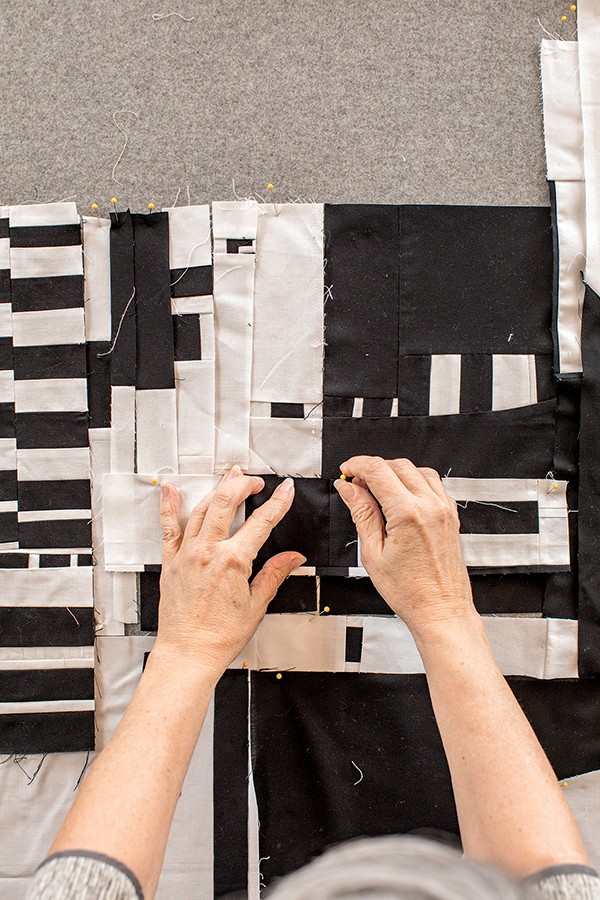
But, she says, “I thought, ‘Well, something in common with my mother. I’ll try it.'”
Kovarik didn’t feel quilting was her medium. And she knew she didn’t want to make a quilt to be used as a bedspread or tablecloth. “Those are beautiful. I love them. But not for me making them,” she notes.
Then she saw some non-traditional quilts. “I thought they were just really more modern interpretations of quilts. They were hanging on a wall instead of a bed. I thought that’s where I could go with this.”
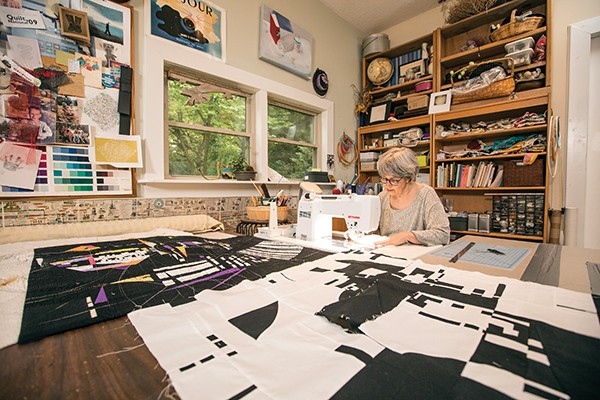
Paula Kovarik
Kovarik describes her first quilt as “just odd patchwork. No rhyme. No reason. No pattern. Just abstract. Abstract compositions. It’s yellow, red, black, and white.”
It took her awhile to find her voice. “I think it took me three or four years to really find out how I was going to approach this medium, experimenting with various techniques and ways of putting quilts together. The more I did it, the more I understood where my voice was coming from.
“Sometimes I come to a piece with an intention, with a communication that I want to make. Other times I come to them just from an emotional standpoint. That can change the technique. It can change the dynamics of the fabric that I use. It can change how I approach a piece.
“Now I’m a little more comfortable in terms of technique. I know how I can do things. Now I’m a lot more free about really approaching it with a free spirit.”
Her work is “really difficult and complicated, but it’s more of an intuitive work than it was in the past. In the past, I had to think about what I was doing and how to do it. Now it’s just doing it.”
Among her quilts is Signals, which took three weeks of stitching. She describes it as “a raw extemporaneous exploration of chaos.”
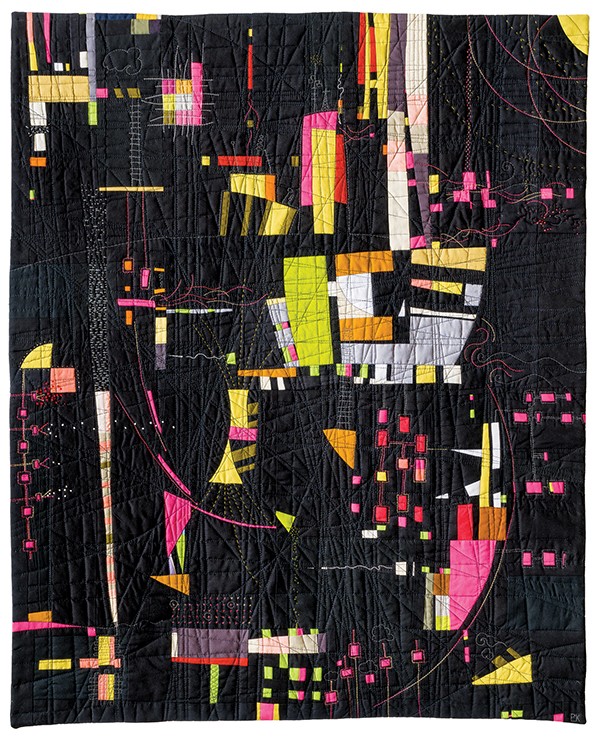 Paula Kovarik
Paula Kovarik
Signals
Incoming, which is more peaceful, has “flying elements that come in from the left side of the piece.
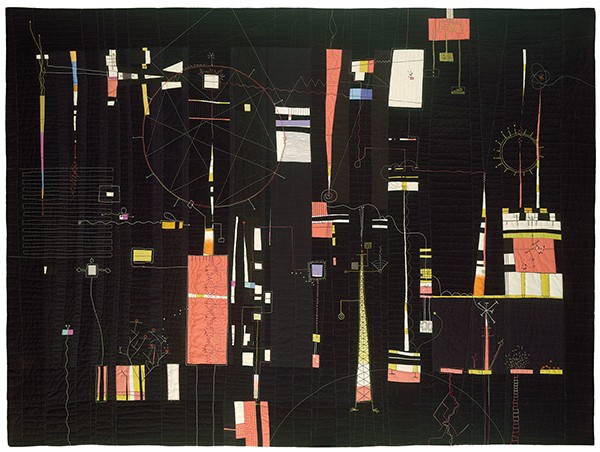 Paula Kovarik
Paula Kovarik
Incoming
“Watching an insect fly across the yard might inspire me to draw his flight path. Little things that we’re not aware of can affect our reality.”
She made a pair of quilted pillows, which she titled Insomnia. “This was during the economic collapse when you can’t go to sleep because you’re thinking, ‘I’ll never be able to retire.’ I did a ‘his’ and ‘hers’ on that.”
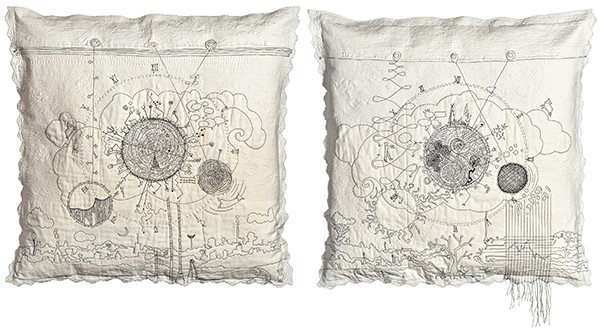 Paula Kovarik
Paula Kovarik
Insomnia
The pillows are favorites of Sielman. “One of the pillow cases is about her experience with insomnia, and the other one is her husband’s experience with insomnia,” Seilman says. “Some of it you can interpret as a viewer, and some of it is symbolic and it makes sense to her. But all you can see is what’s happening on the outside. I love the idea of using a pillow to create an artwork about insomnia.”
Kovarik began making more politically themed quilts after the last election. “I was compelled to do it. I am still compelled. I think we’re at risk. It shows up in my work all the time. The anxiety that I feel comes into my work. The feeling of ‘This is not right. This is really seriously wrong.’ The fact that the public accepts lies every day is really beyond thought.”
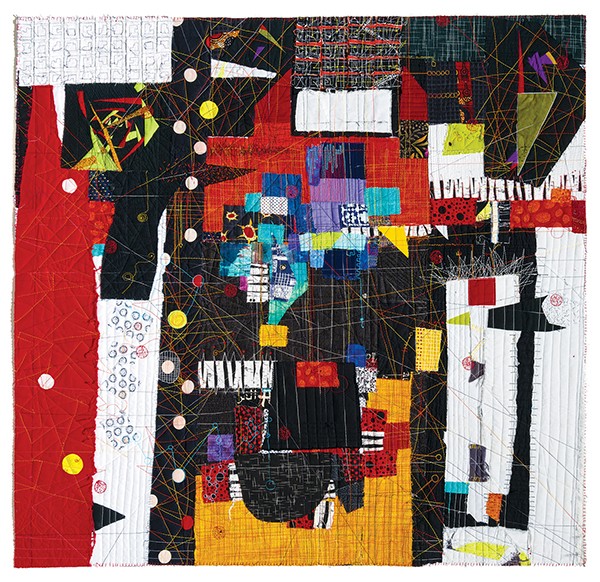 Paula Kovarik
Paula Kovarik
Beastie Boy and His Pals
Her brother, Charley Havelka, built a wooden TV for her 14-foot-long scroll quilt, which is titled I Watch Too Much TV News. Yvonne Bobo, the sculptor, created a set of gears that are attached to rollers that rolls the quilt on a continuous 14-foot-long loop.
A lot is going on in the quilt, which includes images made with black and white thread. “There’s a lot of media people that are spewing things and talking about what’s going on. It’s broadcast over satellites and spewed through the air. Then all these various people screaming or shouting or yelling. We have tsunamis and hurricanes. There’s climate change.”
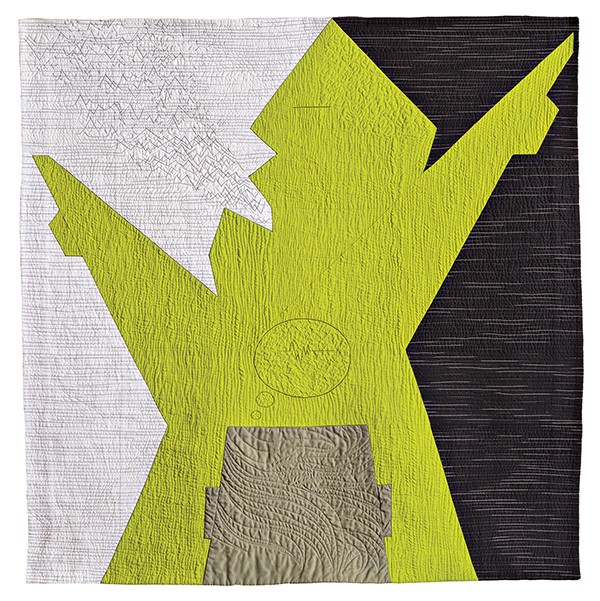 Paula Kovarik
Paula Kovarik
Punditocracy
Prior to the Robert Mueller report, Kovarik created a quilt titled Redacted. The stark black and white quilt features broken lines that evoke a heavily edited document.
Kovarik also does abstract pieces. “I’m experimenting with line and texture and fabric to create whatever comes out. I really try to let the needle tell me where it’s going.
“What I’ve been doing for quite a while now is experimenting more with not only the quilt form, but also drawing with thread.”
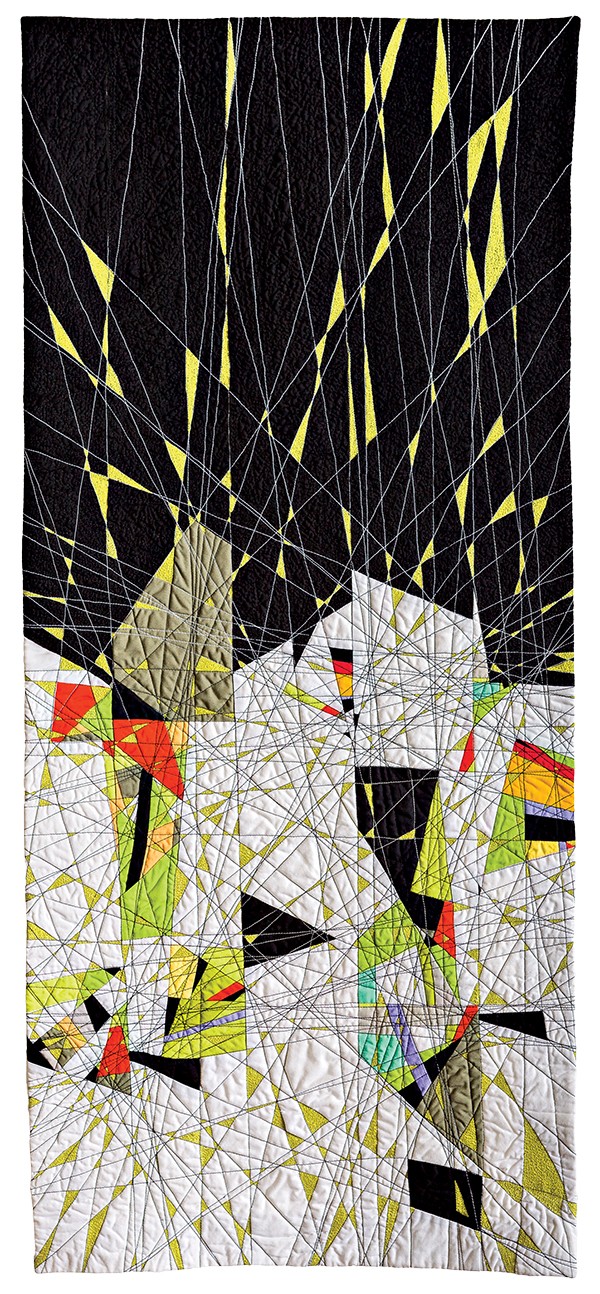 Paula Kovarik
Paula Kovarik
Sightlines
Kovarik makes quilts every day, but, she says, “That doesn’t mean I’m successful every day. There are some times I ruin things. A lot of mis-stitches. I can fix them, but sometimes it’s not worth it. Sometimes the composition is bad. Sometimes it’s overworked.”
Her quilts may stay unfinished for some time. “Like this one here,” Kovarik says. “I’ve put together these pieces of fabric. That pieced fabric will sit on the wall maybe a week or two just [so I can] think about what else is going to be on that piece of fabric. ‘How does the texture change it?’ ‘Why would I have texture?’ All those questions come up. Then the actual stitching is extremely time consuming.”
Her feelings result in a “surge of ideas” instead of a surge of quilts. “This is a slow art. I can’t do this quickly.”
She might spend three weeks to a year on one piece. “It’s slow, which allows me to be more contemplative about the message. It allows me to take the spike off the emotions sometimes.”
Kovarik closed her graphic design business about five years ago because she wanted to focus on her art.
She’s in her backyard studio every day — except for an occasional weekend off — from 7 a.m. to 4 p.m. “With a lunch break.”
To date, she’s made about 70 quilts.
“There’s a lot of things that inspire me. Things that I see in nature and in other artists.”
She held up her Pollinators quilt, which she describes as a self portrait. “It’s about the feelings that I have and about things that I’ve seen or thought about. This is very natural. There are a lot of nature references. I’m consistently using grids in my life, so there’s one of those in there. There’s interior thoughts that are coming out. There’s computer circuits. There’s a little bit of everything in there. Putting those all together is kind of my statement of ‘Okay. These are some of the ways I think.'”
The quilt is double sided. “There’s a dark side and a light side.”
Kovarik began showing her quilts — and getting recognition — about 10 years ago. “A friend of mine came in. She saw the pile of quilts under my table and said, ‘What are you going to do with these?’ I said, ‘I don’t know. I’m just going to keep making them. They’ll end up in some garage sale after I pass away.’ She said, ‘You know, there are shows.’ She gave me a couple of names of shows. I applied to one and got in.”
That was Quilt National, a biannual show in Ohio. “I entered. I was accepted. They put me on the cover of the book.”
City, the quilt she entered, sold for $3,000. Her quilts now range from $2,000 to $12,000.
But, Kovarik says, “I’m not interested in selling my work as much as I am in showing my work. I want my art to travel. I have made it a focus to get my pieces in shows that move.”
Quilt National, she says, travels to museums for three years. “I get to think that my message, my piece, my work, is being seen by lots of different people. That’s the focus that I have gone to since I started my work.”
Terri Phillips, exhibitions coordinator for Crosstown Arts, is excited about “Stitched.” Kovarik, she says, has “worked tirelessly for more than a year” as the organizer. “The ‘Blue’ show has brought in over 200 artists, makers, and quilters from the community, which is fundamental to the mission of Crosstown Arts.”
Phillips first saw Kovarik’s quilts in the artist’s solo show, which was held last year at Dixon. “I was floored. For me, they are very intricate and beautiful drawings, the lines being stitched. They are epic, eccentric — the highest compliment — and creative.”
She visited Kovarik’s studio during the planning stages of “Stitched.” “Her studio was a place I could have hung out in all day. Peaceful and quiet. Beautiful light.”
If she tells people she’s a quilter, Kovarik gets the same reaction from them. “They say, ‘Well, my grandmother used to do that,'” she says. “They think I’m doing traditional work. Bedspreads and lap quilts. Sometimes they’re interested or they’re curious enough and they ask to see my work. Sometimes they’re kind of speechless. They don’t know how to react. Sometimes they really like them.
“I stopped saying I’m a quilter. I say I make art with thread and fabric because it stops that grandma discussion.”
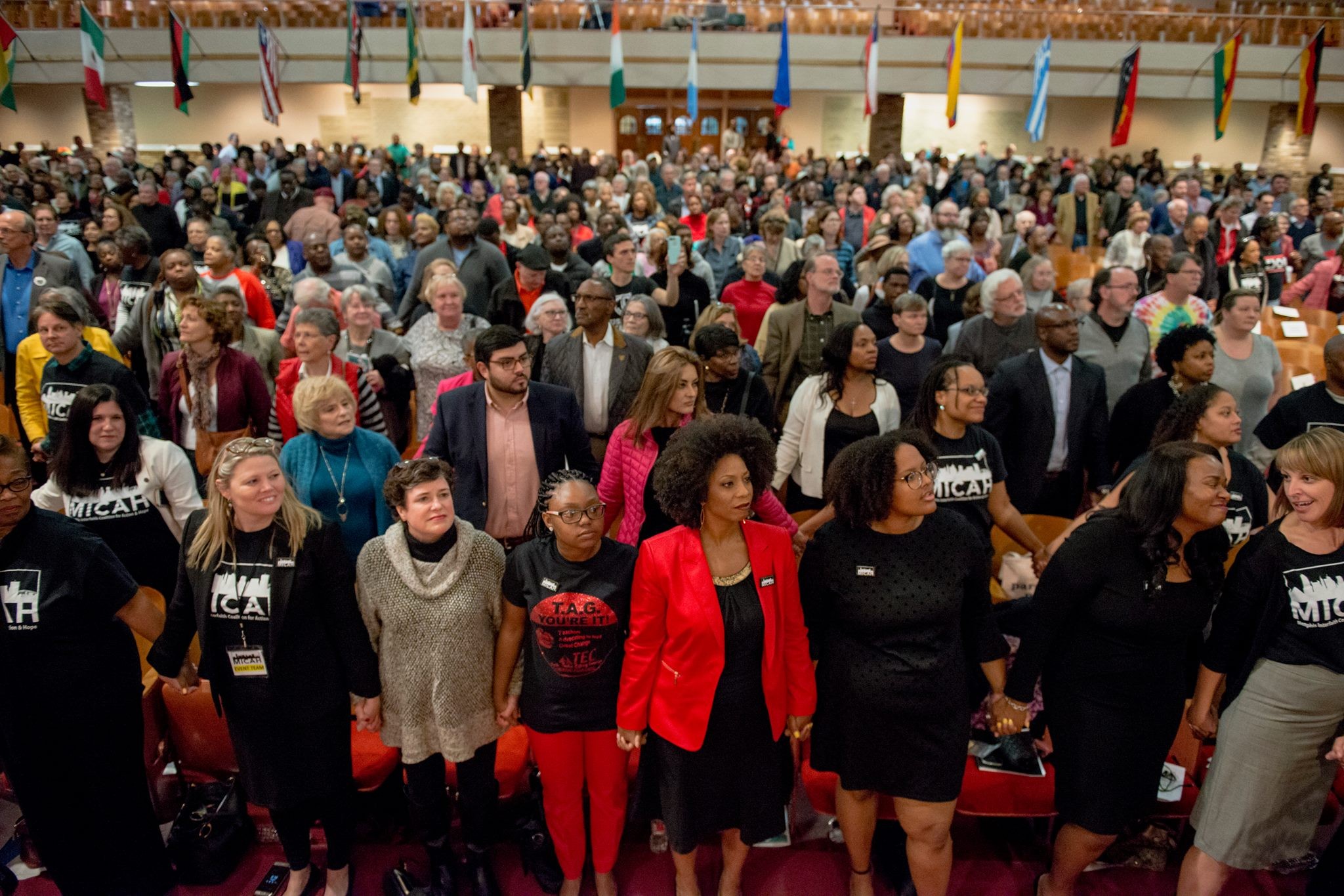 Memphis Interfaith Coalition for Action
Memphis Interfaith Coalition for Action 
 F11photo | Dreamstime.com
F11photo | Dreamstime.com 
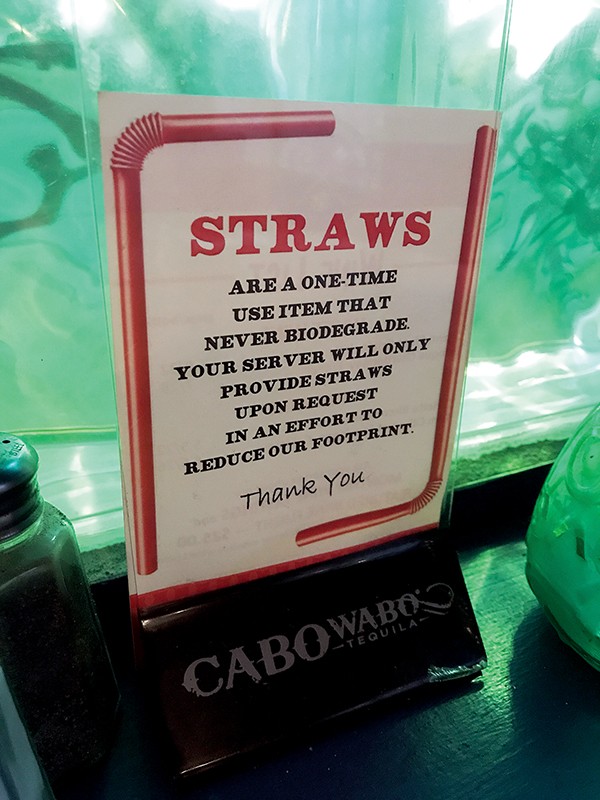 Bianca Phillips
Bianca Phillips 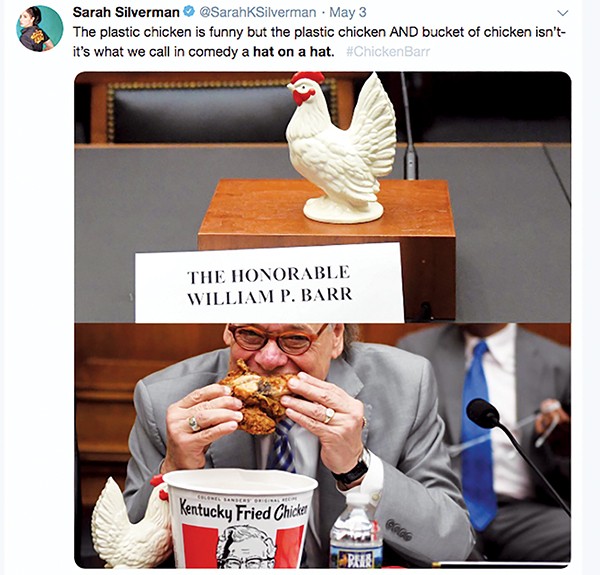

 Paula Kovarik
Paula Kovarik 
 Paula Kovarik
Paula Kovarik 

 Paula Kovarik
Paula Kovarik  Paula Kovarik
Paula Kovarik  Paula Kovarik
Paula Kovarik  Paula Kovarik
Paula Kovarik  Paula Kovarik
Paula Kovarik  Paula Kovarik
Paula Kovarik 


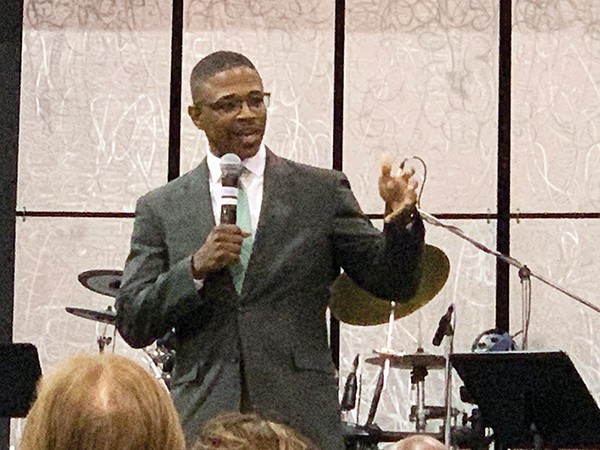 JB
JB